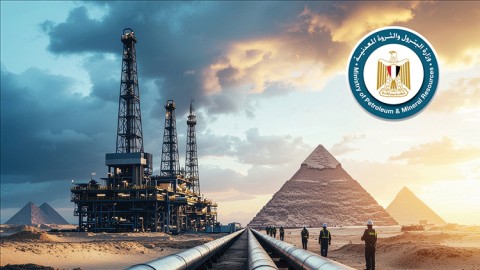Energy is vital for the sustainable development of any nation, be it social, economic, or environmental, as it is linked to industrial production, agricultural output, community, quality of life, health, access to water, education, etc. In the past few decades, energy demand and consumption have increased exponentially globally, due to an increase in population and industrialization. A worldwide spotlight shines on energy management, with a chorus of voices calling for resource conservation, clean energy adoption, and emission reduction to preserve our planet and combat the looming threat of climate change. International oil & gas organizations’ commitment to sustainable development through the management of Energy is highlighted in its “Energy Management Policy” and adopted in HSSE Procedures, Standards, design, operation, and maintenance.
Energy sources are categorized into two types; Non-renewables, fossil fuels (like coal, gas, and oil), nuclear, biofuel & waste, and renewables – which will not deplete if we use them like solar, wind, hydropower, wave, tide, and geo-thermal energy. Fossil fuel-based electricity generation is associated with air pollution/emissions like CO2 (greenhouse gas, which contributes to global warming/ climate change), Ozone, SO2, NOx, and particulate matter which affect the environment negatively.
In the face of pressing climate concerns, adopting renewable energy is no longer a choice, but a necessity. To ensure a sustainable future, all countries must collectively strive for the ambitious goal of sourcing at least 25% of their electricity from renewable resources by 2030. To achieve this, a multifaceted approach is essential. The Ministry of Electricity & Energy in those countries has to introduce guidelines on energy conservation, advising adjusting the high electricity consumption equipment with efficiency not less than 95%, Building Automation, Daylight and occupancy sensors and programmable thermostats, and replacing lighting systems with LED bulbs.
On the way to achieve the objective of overall energy efficiency, the official organizations should introduce many initiatives, including presenting energy audits, energy monitoring, reliable solar energy projects, green building design, building automation systems, changing to LED bulb models, developing energy conservation code, awareness campaigns, etc. Moreover, it has to set up an Energy Management System Authority and determine its commitments and responsibilities clearly. This authority is responsible for developing an Energy Management Policy with its overall intention(s), direction(s), and commitment(s) related to its energy performance based on guidance and support by its top management.
An Energy Management System (EnMS) is not just a bunch of technical jargon. It’s a powerful tool that empowers organizations to take control of their energy use, reduce costs, and contribute to a more sustainable future. Think of it as a roadmap for optimizing your energy efficiency, with a clear destination and specific steps to get you there.
The above figure shows the Energy Management cycle to be followed as a referral procedure.
Companies in the industrialization, service and transport infrastructure sectors will play a vital role in the sustainable transition of the energy system, implementing innovative technologies at full industrial scale. However, developing long-term investment plans is a challenging task complicated by the volatility of energy markets and the uncertainties induced in the policy landscape by the recent energy crises. In this respect, mathematical models can support the transition of industrial systems, steering the planning process.
Significant energy uses (SEUs) are identified by the organization as having major energy consumption and/or considerable opportunity for improvement. It is essential to identify your organization’s significant uses of energy through determined criteria for significance. As it is identified, the current energy performance of significant uses of energy has to be determined. The performance of the significant energy uses is dependent on factors that affect its operation. Identifying these factors or relevant variables will help to determine their current energy performance. Once the performance is determined, processes should be executed to continually monitor that performance. Collecting, analyzing, and tracking data on significant energy use performance system can discover opportunities for improvement.
The Energy Performance Indicator (EnPI) is a measure of energy intensity used to gauge the effectiveness of your energy management efforts. It is used to track annual improvements, energy savings, and Superior Energy Performance (SEP). This tool is designed to help many different types of organizations monitor their energy consumption, and it is used to communicate across the uses of the different manufacturing and non-manufacturing facilities.
An energy audit system is set up to conduct auditing, inspection survey and analysis of energy flows for energy conservation in a building or establishment. It may include a process or system to reduce the required amount of energy input into the energy system without any negative impact affecting the system output. In commercial and industrial buildings/establishments, an energy audit is the first step for determining the available chances to reduce energy consumption, expense, and carbon footprint.
One of the most important challenges of energy management is energy efficiency improvement, so we have to reduce emissions with an energy management plan learn how to monitor energy usage in our business, and discover ways to reduce wasted energy, including heat controllers, insulation, and LED lights. Setting up an energy management plan for your business is crucial to reducing your carbon footprint as part of the world’s transition to net zero by 2050. The latest energy reports found that 36% of small businesses have a plan to combat climate change and 67% of small businesses have taken steps to address their energy usage, some of which include; Installing a smart meter (22%), Installing energy-efficient appliances (37%), Switching to a renewable energy provider/tariff (26%), Investing in microgeneration (18%), Installing solar panels (14%), Installing a heat pump (4%).
We have to have an energy management plan that involves monitoring how much energy we use in order to work out how much energy we are wasting. We can then take steps to improve our energy efficiency. Having an energy management plan in place allows us to comply with international standards and shows any company or organization that is committed to going green.
Finally, we must realize the importance of energy management through planning & efficiency improvement for preserving the environment and combatting climate change, then reach zero carbon emission and get a green life target earliest. Therefore, we have to have legislation and laws that cover and support development activities and guide the process of energy management and efficiency improvement through a set of incentives for the best energy preservation application and some applicable penalties for the others who can contribute to more carbon emission, energy-wasting, and environment pollution. I believe that these legislations must take place in two parallel lines, one by updating and amending old laws & legislation to be in line with the current changes worldwide, and the second by creating and devising new legislation & laws that are essential to support energy wasting elimination & zero-carbon emission objectives.
By Eng. Mohsen Ahmed Farhan Ali
Oil & Gas Well Drilling Specialist
Kuwait Oil Company (KOC) Consultant
Oil & Gas Industry Trainer & Coach








